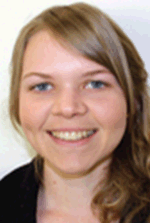Perspectives on successful coal seam gas well decommissioning
Cameron R. Huddlestone-Holmes A E , Thomas G. Measham B , Talia Jeanneret C and James Kear DA CSIRO Energy, PO Box 883, Kenmore, Qld 4069, Australia.
B CSIRO Land and Water, GPO Box 2583, Brisbane, Qld 4001, Australia.
C CSIRO Land and Water, PO Box 883, Kenmore, Qld 4069, Australia.
D CSIRO Energy, Private Bag 10, Clayton South, Vic. 3170, Australia.
E Corresponding author. Email: Cameron.hh@csiro.au
The APPEA Journal 58(1) 94-101 https://doi.org/10.1071/AJ17148
Submitted: 9 December 2017 Accepted: 15 January 2018 Published: 28 May 2018
Abstract
Decommissioning of wells and well pads (plugging and abandonment of the well and rehabilitation of the well pad) is an important activity in coal seam gas developments due to the large number of wells drilled and their co-location with other land uses. Successful decommissioning will need to be conducted in a way that is effective, efficient, complies with regulatory requirements and is socially acceptable. This study sought to understand the perspective of industry, government and local stakeholders on the decommissioning process and asked the question ‘what does successful decommissioning mean’? The study was conducted through workshops held in Camden, Chinchilla and Narrabri involving industry, government and local residents.
All stakeholders agreed that the goal of successful decommissioning is to effectively have no legacy issues arising from the abandoned well or well pad, in perpetuity. However, there were differences in the confidence that stakeholders had in the process of achieving this outcome, largely based on the varying levels of understanding of well abandonment. This lack of confidence and understanding contributes to cross-cutting themes that emerged from the workshops. Local stakeholders expressed a strong desire for independent oversight and assessment of well abandonment processes, with increased transparency and access to information on abandoned wells in an understandable form. They also stated that long-term monitoring of wells post abandonment would assist in providing them with confidence that wells can be successfully decommissioned.
Keywords: abandonment, coal seam gas, decommissioning, stakeholder perceptions.

Dr Cameron Huddlestone-Holmes is a Senior Research Scientist in CSIRO Energy. Cameron works on environmental, geological and geotechnical problems in the earth resources industry, primarily in the unconventional gas, coal and geothermal sectors. His speciality is in integrating multi-disciplinary capabilities in geoscience and resource engineering and applying them to solving problems in industry. The majority of Cameron’s current work is conducted with the Gas Industry Social and Environmental Research Alliance (GISERA) on social and environmental topics related to the onshore gas industry. Dr Huddlestone-Holmes has a PhD in Geology, and has worked for 20 years in industry and research, the last 9 years of which have been with the CSIRO. He is a member of the Society of Petroleum Engineers and the Petroleum Exploration Society of Australia. |

Dr Tom Measham is a Principal Research Scientist in CSIRO Land and Water. Dr Measham leads the Resources and Communities Team of economists and social scientists that focuses on how regional communities are affected by, and engage with, the social and economic challenges and opportunities that face them, including the development of mining and energy sectors. His previous research has focused on the way regional communities respond to environmental challenges in diverse rural and urban environments. Dr Measham has a PhD in Human Geography. |

Talia Jeanneret is a Research Technician in CSIRO Land and Water. Talia works in the social sciences program across multiple domains, including engaging industry, government and communities in issues of resource governance. Recently, her projects have spanned the fields of science and technology studies, social licence to operate, value chain analysis and natural resource management. Talia has a Bachelor of Environmental Science. |

James Kear is a Civil and Environmental Engineer and is the leader of the Hydraulic Fracturing Research Team at CSIRO. He has research experience in the fields of hydraulic fracturing, rock mechanics, sustainable design and systems thinking. James’ Hydraulic Fracturing Research Team undertakes development of hydraulic fracture models, experimental investigation of hydraulic fracture growth, novel hydraulic fracture field applications and tiltmeter monitoring and analysis of hydraulic fracture growth. He is a member of the Society of Petroleum Engineers. |
References
AGL (2017) Camden gas project. Available at: https://www.agl.com.au/about-agl/how-we-source-energy/natural-gas/natural-gas-projects/camden-gas-project (Accessed: 27 November 2017)Boothroyd, I. M., Almond, S., Qassim, S. M., Worrall, F., and Davies, R. J. (2016). Fugitive emissions of methane from abandoned, decommissioned oil and gas wells. The Science of the Total Environment 547, 461–469.
| Fugitive emissions of methane from abandoned, decommissioned oil and gas wells.Crossref | GoogleScholarGoogle Scholar |
Colvin, R. M., Witt, G. B., and Lacey, J. (2015). Strange bedfellows or an aligning of values? Exploration of stakeholder values in an alliance of concerned citizens against coal seam gas mining. Land Use Policy 42, 392–399.
| Strange bedfellows or an aligning of values? Exploration of stakeholder values in an alliance of concerned citizens against coal seam gas mining.Crossref | GoogleScholarGoogle Scholar |
Dietz, T., and Stern, P. C. (2007) ‘Public Participation in Environmental Assessment and Decision Making’. (The National Academies Press: Washington DC).
Huth, N. I., Cocks, B., Dalgliesh, N., Poulton, P. L., Marinoni, O., and Garcia, J. N. (2014). Farmers’ perceptions of coexistence between agriculture and a large scale coal seam gas development. Agriculture and Human Values , .
| Farmers’ perceptions of coexistence between agriculture and a large scale coal seam gas development.Crossref | GoogleScholarGoogle Scholar |
International Organization for Standardization (2017). ‘Petroleum and natural gas industries – Well integrity – Part 1: Life cycle governance. ISO 16530–1’. pp. 124. (International Organization for Standards)
Judah, J. (2017). Decommissioning and Footprint Reduction. Journal of Petroleum Technology 69, 10–11.
| Decommissioning and Footprint Reduction.Crossref | GoogleScholarGoogle Scholar |
Measham, T. G., and Fleming, D. A. (2014). Impacts of unconventional gas development on rural community decline. Journal of Rural Studies 36, 376–385.
| Impacts of unconventional gas development on rural community decline.Crossref | GoogleScholarGoogle Scholar |
Measham, T. G., Fleming, D. A., and Schandl, H. (2016). A conceptual model of the socioeconomic impacts of unconventional fossil fuel extraction. Global Environmental Change 36, 101–110.
| A conceptual model of the socioeconomic impacts of unconventional fossil fuel extraction.Crossref | GoogleScholarGoogle Scholar |
NSW Chief Scientist and Engineer (2014). ‘Independent Review of Coal Seam Gas Activities in NSW Information paper: Abandoned wells’. (NSW Government: Sydney)
NSW Department of Trade and Investment (2012). ‘Code of Practice for Coal Seam Gas Well Integrity’. (NSW Government: Sydney)
Office of the Chief Economist (2015). ‘Review of the socioeconomic impacts of coal seam gas in Queensland’. (Australian Government Department of Industry, Innovation and Science: Canberra)
Prno, J., and Slocombe, D. S. (2012). Exploring the origins of ‘social license to operate’ in the mining sector: Perspectives from governance and sustainability theories. Resources Policy 37, 346–357.
| Exploring the origins of ‘social license to operate’ in the mining sector: Perspectives from governance and sustainability theories.Crossref | GoogleScholarGoogle Scholar |
Queensland Department of Natural Resources and Mines (2017). ‘Code of Practice for the construction and abandonment of coal seam gas wells and associated bores in Queensland’. (Queensland Government: Brisbane)
Shaw, P. F. (2017). Decommissioning and remediation challenges for the petroleum industry. The APPEA Journal 57, 546–548.
| Decommissioning and remediation challenges for the petroleum industry.Crossref | GoogleScholarGoogle Scholar |
Standards Norway (2013) ‘Well integrity in drilling and well operations. NORSOK D-010 Rev. 4. 4th edn’. (Standards Norway: Lysaker)
Thornton, W. (2016). Technology focus: decommissioning and abandonment. Journal of Petroleum Technology 68, 80.
| Technology focus: decommissioning and abandonment.Crossref | GoogleScholarGoogle Scholar |
Vidic, R. D., Brantley, S. L., Vandenbossche, J. M., Yoxtheimer, D., and Abad, J. D. (2013). Impact of Shale Gas Development on Regional Water Quality. Science 340, 1235009.
| Impact of Shale Gas Development on Regional Water Quality.Crossref | GoogleScholarGoogle Scholar |


